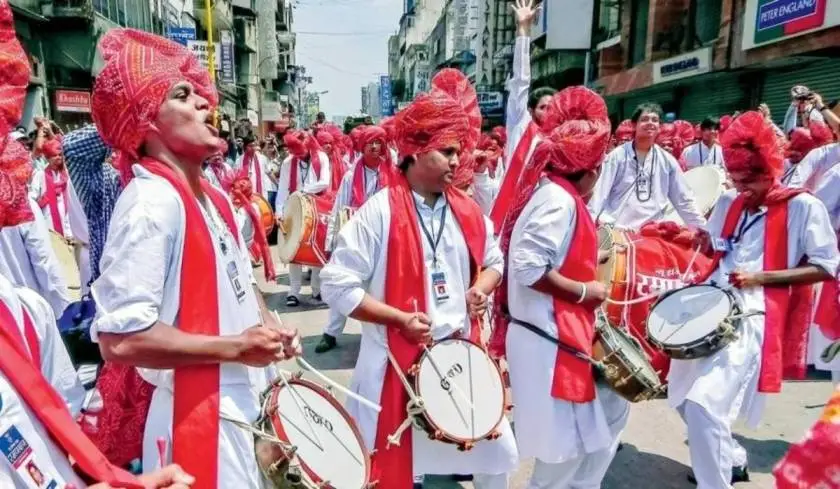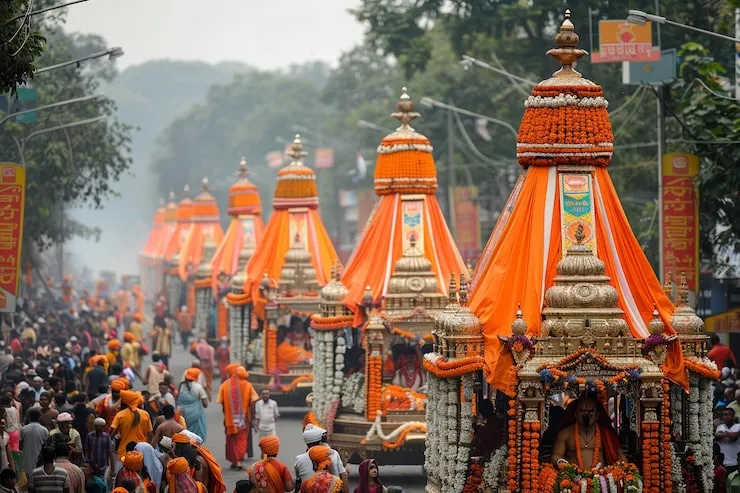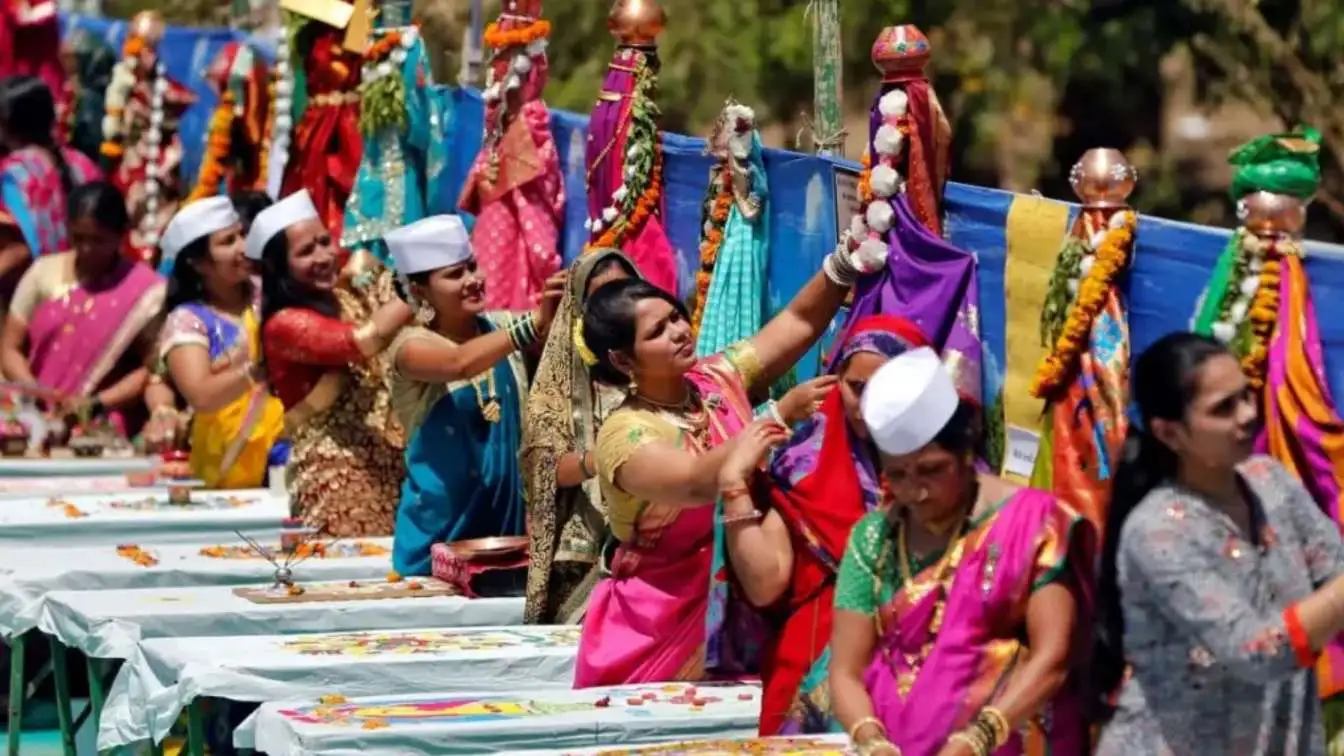Mumbai is the "City of Dreams". It is known for its culture, street life, historic landmarks and natural attractions. Ganesh Chaturthi, is considered as Maharashtra's biggest festival. With decorations, devotional music, and massive crowds pandals become the hubs of activity. Devotees pay homage to Lord Ganesha. Known for extending the celebration for 10 days. People groove to the beats reflecting the lively atmosphere of the festival. Some of the locations where millions of devotees gather to Dhol Tasha Ganesh Chaturthi:
Read Also: Ganesh Chaturthi 2025: What’s New in Lalbaugcha Raja This Year?
Ganpati Grooves: Music That Moves Mumbai
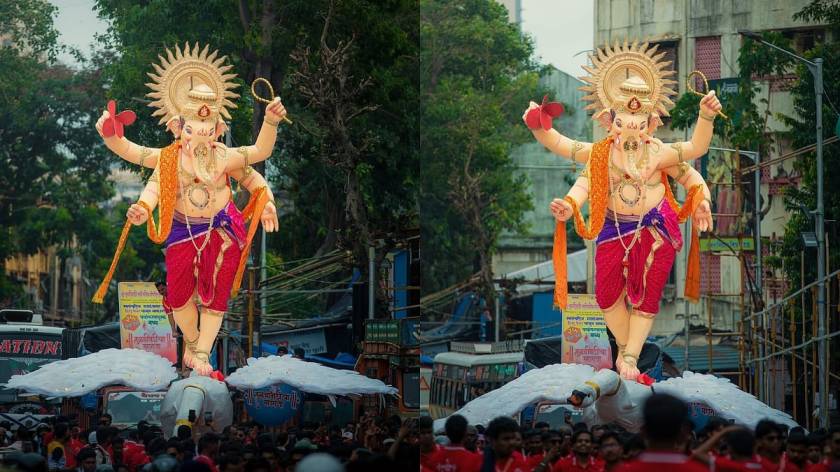
1.Lalbaugcha Raja:
This is one of the most famous Ganpati idol in Mumbai, with over 1.5 million devotees a day.
2.GSB Seva Mandal:
Located in King's Pandal this location is known for its decorations. It is done with gold and silver ornaments.
3.Khetwadi Cha Ganraj:
This is located in the Girgaon area, and is an award-winning Ganesh idol.
4.Chinchpoklicha Chintamani:
This is one of the oldest pandals, known for its traditional celebrations.
5.Andhericha Raja:
This place has the title of wish fulfilling Ganpati.
Dhol-Tasha: Tradition in Thunderous Rhythm
1. Historical Roots
The history of Dhol Tasha dates its roots to the cultural landscape of Maharashtra. Dhol Tasha was originated as war drums. It was used to motivate soldiers heading into the battle. These instruments ensembles military. This is a man made festival which was introduced by Lokmanya Tilak, a freedom fighter. Groups of youth often began to give musical form a new life during the celebrations. It began with a few groups and has now evolved into a mass movement.
2. Mumbai’s Embrace
Mumbai enthusiastically embraces dhol-tasha. The energetic drum-beat music, during Ganesh Chaturthi creates a festive atmosphere. This drumming accompanies the grand public processions. The celebrations symbolizes cultural expression as the city witnesses the sounds of devotion.
Dholi Tasha gained popularity in the early 2000s. Hundreds of groups march through the streets. Be it from Girgaon Chowpatty to Lal baug. The number grew over 300 today. People celebrate often in kurtas, pagdis , and sashes for weeks during this festival. For many of the drummers it is not just a performance but an identity, they say it is in there blood.
3. Gender and Inclusion
During the celebrations, significant changes have been observed. Including a gender shift in Dhol-Tasha groups. Since they were historically male-dominated. More women are joining and leading these musical groups breaking the stereotypes. They are even seen challenging traditional norms and changing the festive landscape. This shift shows how different forms can be adapted regardless of the gender. Housewives, college students, and working professionals are more active in these groups.
4. Aesthetic Discipline
Dhol-Tasha pathaks give special importance to precision, timing, and discipline. During Ganesh Chaturthi, a wide range of traditional principles and rituals are observed. During the pandal decoration, towering idols this discipline is often manifested. The practice sessions for weeks fills the state with joy. The atmosphere is deeply rooted into Marathi cultural.
Ganpati Processions: Fusion, Frenzy, and the DJ Era
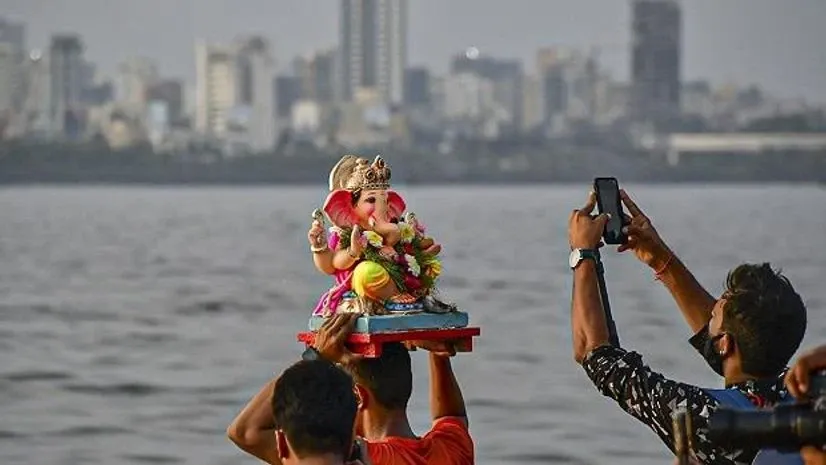
Enter the DJs
In the 21st century, DJs became a dominant feature of this festival in Mumbai. Large speakers and laser light shows are used during processions. Sacred chants like “Ganpati Bappa Morya” were layered over techno and Bollywood remixes. The DJs move from cities like nightclubs with lights, music celebrating the festival. For the 2025 festival, Bombay High Court issued orders. It was for prohibiting DJs as it was causing noise pollution. Ganpati Visarjan became a street party and not just a religious ganesh chaturthi 2025.
You May Also Like: Rangoli Designs For Ganesh Chaturthi
Resistance and Regulation
The eventual ban was because the residents complained of noise pollution. This also shift sparked backlash. It was basically a result of sustained efforts by anti-noise pollution advocates. In subsequent years, the court's stance grew stricter. The rule mandated restrictions on noise levels. Which are supposed to be particularly between 10 p.m. and 6 a.m. It was often capped at 90 db in residential zones.
Many groups replaced DJs with traditional musical ensembles. It included dhol tasha which were an integral part of the celebration before the "DJ era". This also redirected the focus back to the devotional aspects of the festival. On social platforms, videos of "Dance Ganpati" receive millions of Dhol Tasha Ganesh Chaturthi.
Social Commentary
In Mumbai, the arrival of DJs has sparked significant social commentary. It revealed tensions between tradition, public order, and modern expressions of faith. The social commentary against the use of DJs highlights several concerns like-
- Public health
- civic responsibility
- community disturbances
While there were critics, there were also arguments in favor of the DJ. For many youngsters and organizers, the DJ is not a departure from tradition but an evolution of it. Many youngsters felt that modern music played by DJs is a nice way to celebrate the faith.
The Sound of Resistance: Reclaiming Public Spaces
Rehearsals Under Flyovers
Ganpati procession rehearsals are conducted across India by the organizers. When their are height and width restrictions they have to find alternative routes. One of the most touching idea of Mumbai’s Dhol-Tasha revival is where the music is made. Due to less availability of rehearsal spaces. Many groups practice under the passes or construction sites. In doing so, they reclaim space symbolically and physically. It becomes a declaration of cultural ownership. They very act of playing loud music unapologetically in Ganpati festive grooves.
Post-COVID Rebuild
During the COVID-19 pandemic, these groups were heavily restricted. While the social gatherings were banned people had to celebrate at home. Post-pandemic, the festival has been rebuilt around a return to public gatherings. Some were disbanded. Many turned to community service organizing food drives and vaccination camps.
While some pandemic era adaptations have continued. The return of celebrations was seen in 2022. As restrictions lifted, the return of Dhol-Tasha became symbolic.
Conclusion
The electronic music genre is defined by its speedy beats and heavy bass lines. Be it the boom of Dhol-Tasha. Be it the sound of Drum ’n’ Bass, Ganpati in Maharashtra is a festival celebrated with all the love. It is about making memories and momentum, and about staying grounded while praying. Where the teenagers enjoy pounding a dhol under a flyover, or doing rehearsals it is all fun to watch. Police and organizers often work together. They plan routes and manage crowds during the celebrations. Ganpati showers his blessings on all. And in this we not only hear the music but we hear Mumbai's heartbeat.



